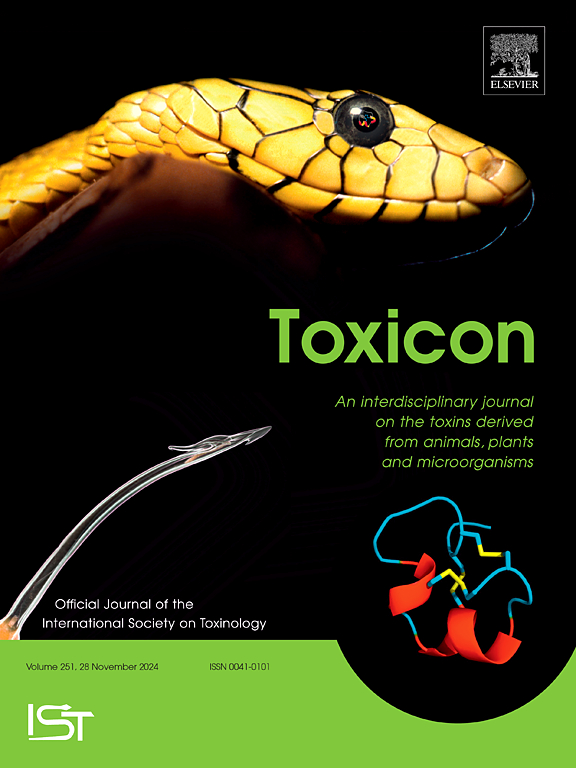Medicinal chemistry and detoxification of poisonous plants in traditional medicine: A comprehensive review
IF 2.6
4区 医学
Q2 PHARMACOLOGY & PHARMACY
引用次数: 0
Abstract
Introduction
Poisonous and toxic plants are used in different traditional systems of medicine for medicinal preparations after certain processing (detoxification) method. However, the correlation between plant toxicity and their chemical constituents remains unexplored for many of these plants. A thorough study on bioactive constituents from poisonous plants could also benefit their proper utilization and improve their usage systematically.
Methods
A thorough search of research articles and data bases (Science Direct, PubMed, SciFinder, and Google Scholar) have been done for phytoconstituents and their toxicity aspects. Emphasis was upon searching chemistry of detoxification aspects of traditional poisonous plant materials.
Results
Exploration and correlation with traditional system of medicine would help for future drug research and development. The detoxification methods of poisonous plants have been reported but the chemical changes occurring after detoxification remains unexplored for majority of these plants. To understand the safe and informed usage of these poisonous medicinal plants, it is important to investigate their chemical constituents, toxicity phenotypes, mode of action, underlying mechanisms, and detoxification processing techniques. In the present review, poisonous plants of traditional systems of medicine with their constituents and toxicity have been compiled.
Conclusion
We discussed poisonous medicinal plants and their toxicity, ways to lessen their toxicity, and discover the processes that underlie detoxification and process of detoxification, and the chemical modification of constituents as a result of detoxification. These provide information on how to employ poisonous medicinal plants safely and sensibly in clinics, how to control the quality of toxic herbs. Limited references were available for Papaver somniferum and Cannabis sativa for their restricted (narcotics) use. This review will give valuable insights for researchers in traditional medicine.

传统医学中有毒植物的药物化学与解毒研究综述
简介:有毒和有毒的植物在不同的传统医学系统中用于药物制剂,经过一定的加工(解毒)方法。然而,许多这些植物的毒性与其化学成分之间的相关性仍未被探索。深入研究有毒植物的生物活性成分,有利于其合理利用和系统地提高其利用水平。方法:对研究论文和数据库(Science Direct, PubMed, SciFinder和谷歌Scholar)进行了全面的检索,以了解植物成分及其毒性。重点是寻找传统有毒植物材料解毒方面的化学。结果:探索并与传统医学体系进行对比,有助于今后药物的研究与开发。有毒植物的解毒方法已有报道,但大多数有毒植物解毒后的化学变化尚不清楚。为了了解这些有毒药用植物的安全和知情使用,重要的是研究它们的化学成分、毒性表型、作用方式、潜在机制和解毒处理技术。本文对传统医学体系中的有毒植物及其成分和毒性进行了综述。结论:讨论了有毒药用植物及其毒性、降低毒性的途径,揭示了解毒的机理和解毒过程,以及解毒过程中成分的化学修饰。这些提供了如何在诊所安全合理地使用有毒药用植物,如何控制有毒草药质量的信息。关于罂粟和大麻的限制(麻醉品)使用的参考资料有限。这一综述将为传统医学研究人员提供有价值的见解。
本文章由计算机程序翻译,如有差异,请以英文原文为准。
求助全文
约1分钟内获得全文
求助全文
来源期刊

Toxicon
医学-毒理学
CiteScore
4.80
自引率
10.70%
发文量
358
审稿时长
68 days
期刊介绍:
Toxicon has an open access mirror Toxicon: X, sharing the same aims and scope, editorial team, submission system and rigorous peer review. An introductory offer Toxicon: X - full waiver of the Open Access fee.
Toxicon''s "aims and scope" are to publish:
-articles containing the results of original research on problems related to toxins derived from animals, plants and microorganisms
-papers on novel findings related to the chemical, pharmacological, toxicological, and immunological properties of natural toxins
-molecular biological studies of toxins and other genes from poisonous and venomous organisms that advance understanding of the role or function of toxins
-clinical observations on poisoning and envenoming where a new therapeutic principle has been proposed or a decidedly superior clinical result has been obtained.
-material on the use of toxins as tools in studying biological processes and material on subjects related to venom and antivenom problems.
-articles on the translational application of toxins, for example as drugs and insecticides
-epidemiological studies on envenoming or poisoning, so long as they highlight a previously unrecognised medical problem or provide insight into the prevention or medical treatment of envenoming or poisoning. Retrospective surveys of hospital records, especially those lacking species identification, will not be considered for publication. Properly designed prospective community-based surveys are strongly encouraged.
-articles describing well-known activities of venoms, such as antibacterial, anticancer, and analgesic activities of arachnid venoms, without any attempt to define the mechanism of action or purify the active component, will not be considered for publication in Toxicon.
-review articles on problems related to toxinology.
To encourage the exchange of ideas, sections of the journal may be devoted to Short Communications, Letters to the Editor and activities of the affiliated societies.
 求助内容:
求助内容: 应助结果提醒方式:
应助结果提醒方式:


